Table of Contents
Do you find car washing boring and time-consuming? That’s because you’ve been doing it wrong! It can be quick and easy to keep your car clean even without a hose. For those who don’t have access to outdoor water or want to conserve it, there are many alternatives that work just as well.
All you need is a parking spot with a faucet nearby. You may use either the traditional bucket-and-sponge method or the more efficient two-bucket technique that has been around for decades.
Below we’ll outline four methods on how to wash a car without a hose at all, followed by tips on proper technique. Let’s get right into it.
How To Wash a Car Without a Hose?
While cleaning an automobile without running water may seem like an impossible task, it doesn’t have to be hard if done correctly!
This guide will teach you how to wash your vehicle in four different ways so that you can keep it looking its best year-round.
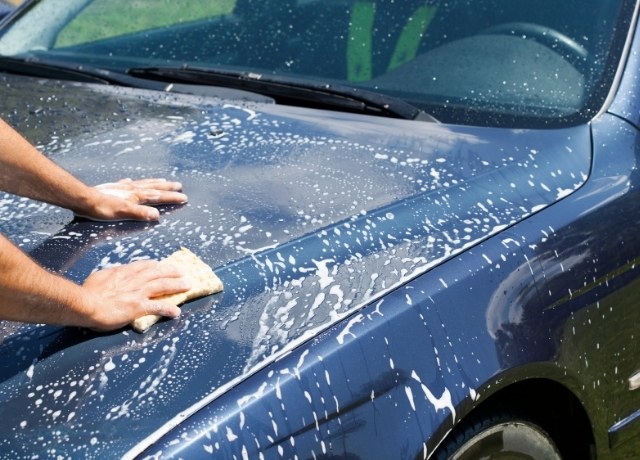
Rinseless Car Wash:
This eco-friendly method cleans cars without rinsing off dirt first! When used along with microfiber towels or waterless detailers specifically designed for this process special solutions wipe away grime from vehicles.
Because of droughts and other environmental factors like these where there isn’t much available plumbing – plus this gives drivers another opportunity help protect our planet as well!
Equipment Required:
When undertaking a rinse-less wash, these items are necessary;
- Rinse less wash solution.
- Microfiber cloth
- Microfiber wash mitt
- One wash bucket
Using a Rinseless Method to Wash Your Car Without a Hose:
- The Solution: Use the label instructions to dilute your rinseless product before applying.
- Spray and Wipe: Spray a little of the prepared solution onto one panel, then wipe with clean microfiber towels until it looks spotless.
- Two Bucket Method (Recommended): One bucket holds rinseless while another has clean water for rinsing mitt or cloth between wipes so that no contamination occurs during washing which helps prevent surface scuffs forming on cleaned surfaces.
Advantages of a Rinseless Wash:
- Water Conservation
- Eco-Friendly
- Convenience
- Safety
- Efficiency
Disadvantages of a Rinseless Wash:
- Residual Dirt
- Hard-to-Reach Areas
- Not Suitable for Muddy Vehicles
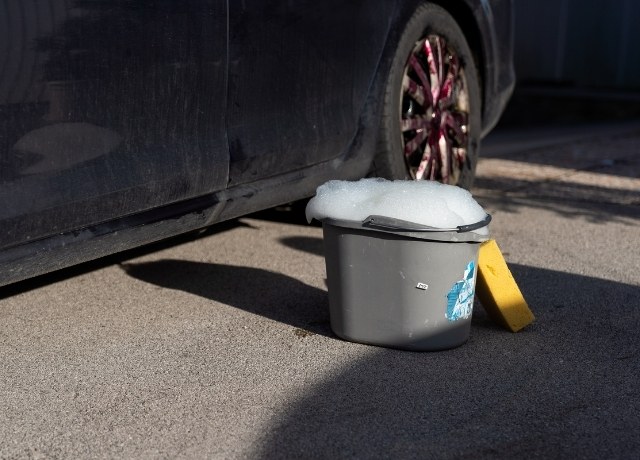
Two Bucket Method:
There are two buckets—one containing cleaning solution and the other with clear water for rinsing. This ensures your mitt is clean before dipping into soap mixture thereby preventing dirt from scratching car paint.
Necessary Tools:
- Pair of Buckets
- Microfiber Wash Mitts
- Microfiber Towels
- Cleaning Solution
Steps to Wash a Car Without a Hose Using the Two Bucket Method:
1. Prepare Your Buckets:
Fill first bucket halfway using warm tap water then add detergent or soap as per manufacturer’s directions. In addition, second container should be filled up completely by running cold clean tap water.
2. Washing Your Car:
Dip mitt in soapy mixture starting top down section by section until entire vehicle is covered like lather foam. Thus, rinse each section off with clean bucket water preventing any dirt removed during previous wash step from being reintroduced again.
3. Use Grit Guards:
If you have them place at bottom of both containers but if not skip this step though try using whenever possible since they trap small particles capable scratching car’s paint.
4. Drying Your Car:
Wipe down your car’s exterior, including the windows and lights, with a lot of soft microfiber towels until all visible moisture is removed. This can later create undesirable swirl marks and streaks.
Advantages of the Two Bucket Method
- Prevents Scratches
- Cost-Effective
- Eco-Friendly
Disadvantages of the Two Bucket Method
- Time-Consuming
- Initial Cost
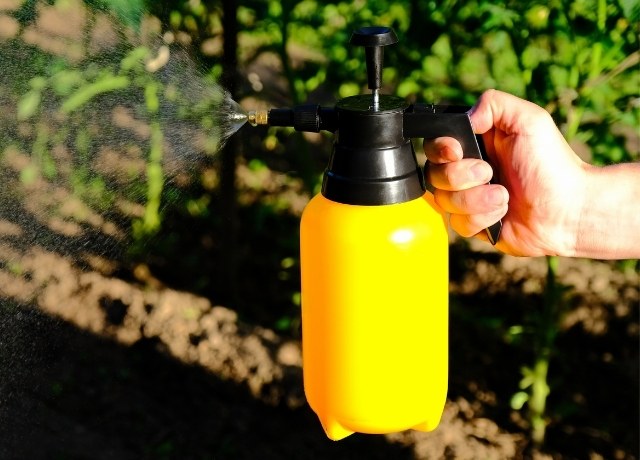
Pump Sprayer Guide for Washing Your Car Without a Hose:
Pump sprayers can replace garden hoses or pressure washers for making snow foam. ONR (Optimum No Rinse) and other no-rinse cleaning solutions work well as tire cleaners.
A larger pump sprayer filled with water is good for rinsing off any pre-soak or degreaser applied with a smaller one.
When you don’t have access to water, pump sprayers are the best way to wash your car without using a hose.
What You’ll Need:
- Water-filled Pump Sprayer
- Snow Foam or Traffic Film Remover
How to Wash Car Without Hose Using a Pump Sprayer:
Cleaning Solution Dilution:
The first step in obtaining the best results is diluting your preferred cleaner in a bucket of water as directed by the manufacturer.
Preparation for Pump Sprayer:
Fill the pump sprayer with this diluted cleaning solution. Then, press the handle repeatedly to make it hard.
Squeeze trigger so that it may work on your car surface. How easy and effective this step is will depend on how good your pump sprayer is.
Solution Application:
Evenly spray over your car’s surface with a cleaning solution. This pre-wash procedure helps loosen dirt and debris which makes contact wash safer and more effective.
Rinse (if required):
For rinsing off any pre-soak or degreaser from car bodywork, use litres of water contained in another bigger-size pump sprayer if need be.
Advantages of Using a Pump Sprayer:
- Accessibility
- Efficiency
- Eco-Friendly
Disadvantages of Using a Pump Sprayer:
- Cost
- Effort
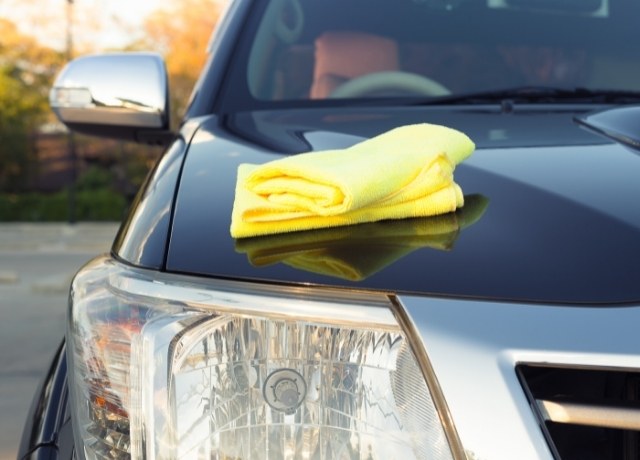
Waterless Car Wash Method:
Using baking soda to recondition your battery is a simple and efficient method that helps keep your battery healthy.
If you don’t want your car to break down while driving or starting, it’s important to clean the terminals of a car’s battery as this will reduce corrosion and increase its lifespan.
What You’ll Need:
- Waterless Car Wash Solution
- Microfiber Towel
Washing Car Without Hose Using Waterless Car Wash Solution
There are only a few steps in this technique:
- Break It Down: Break your vehicle into manageable sections.
- Spray Generously: Generously spray the waterless car wash solution on the targeted area and let it sit for some seconds so that dirt can loosen up.
- Wipe Clean: Use a clean side of the towel each time you wipe off the solution to prevent scratching of surface.
For more information about washing cars with this technique, we have written an extensive guide on it. Make sure to read it for better understanding.
Advantages of Car Cleaning Without Water:
- Eco-Friendly
- Convenient
- Safe
Disadvantages of Car Cleaning Without Water:
- Limitations
- Cost

Important Things for Washing a Car Without Hose:
1. Stay Away from Direct Sun
Once the paint dries, move your vehicle out of direct sunlight to avoid unsightly spots. Close all windows and lower the antenna so that water doesn’t enter or damage anything.
2. Choose Cloudy Days Instead of Hot and Sunny Ones:
It’s easier to wash your car on overcast days than it is on scorching sunny ones. On sunny days, water evaporates quickly leaving marks on the vehicle’s surface; however, cloudy conditions allow for more thorough cleaning without streaks.
3. Clean Wheels First:
Wheels should be cleaned first because they are filthy. Dust accumulates in between wheel parts which can make them look unattractive and work less efficiently. Once the wheels are clean then you can move onto washing the rest of the car.
4. Rinse Out The Microfiber Wash Mitts:
Microfiber wash mitts must remain clean! Let them soak in hot water and scrub off any dirt that may have gotten trapped inside their fibers during use this will prevent dirt from getting back into your vehicle while cleaning.
5. The Inside Should Be Clean Too:
Just like its exterior, a car’s interior needs to stay tidy as well! Start by removing trash or other clutter laying around before moving onto deep-cleaning every surface including flooring materials such as rubber mats which should be rinsed thoroughly after being scrubbed with soap.
6. Keep It Up Regularly:
To stop rust forming on your vehicle’s outer layer/underbody you need to wash it regularly remembering also that paint is damaged by dirt too – meaning if there is lots of filth built up over time then getting rid of it will become increasingly difficult!
Frequently Asked Questions:
Q: How can I wash my car without a hose?
A: There are different ways to clean your car without a hose. One of them is using waterless cleaning products.
These sprays eliminate dirt without any water involved. Just spray and wipe off with a microfiber cloth.
You can also use eco-friendly car washing solution that requires minimal rinsing in a bucket filled with water.
Q: Can I wash my car with a bucket of water?
A: A bucket can be used for washing your vehicle. Use soapy water in one bucket and rinse it in another one filled with clean water.
Then, use sponge or cloth to scrub the car before rinsing it off again using fresh water. This method helps save the environment as well as conserve water.
Q: How to wash a car without access to water?
A: If there isn’t any nearby source of H2O, consider getting yourself some good quality no-rinse wash solution like these cleaners which work wonders on vehicles without needing any liquid whatsoever Spray them onto surfaces then wipe away dirt trapped inside microfibers – easy peasy lemon squeezy!
Q: Do I need a hose to wash my car?
A: Not at all! Buckets filled with clean/dirty waters or even better; chemical-free cleansers work just fine too.
These options are time savers and environmentally friendly because they prevent wastage during such activities
Q: Is it possible to use a garden hose to clean my car?
A: Yes, although this is not the best way of saving water.
If you do opt for a hosepipe, try fitting a nozzle which lets you control flow in order that wastage is reduced.
Another option would be using a bucket wash or even better – an eco-friendly waterless car product.
Conclusion:
To sum up, these dry car washing methods are not only feasible but also easy and effective. From the conventional method to new inventions such as:
- No-rinse car washes
- Two bucket technique
- Pump sprayers
- Waterless car washes
Eco-friendly car cleaning practices can be customized to suit your requirements. Each has its own pros and cons, but they all look after the outer appearance of your vehicle.
If you have limited water supply or want something more environmentally friendly, use these hose-free washing methods instead.
Experiment with different ways to find out what works best for keeping your car shiny.

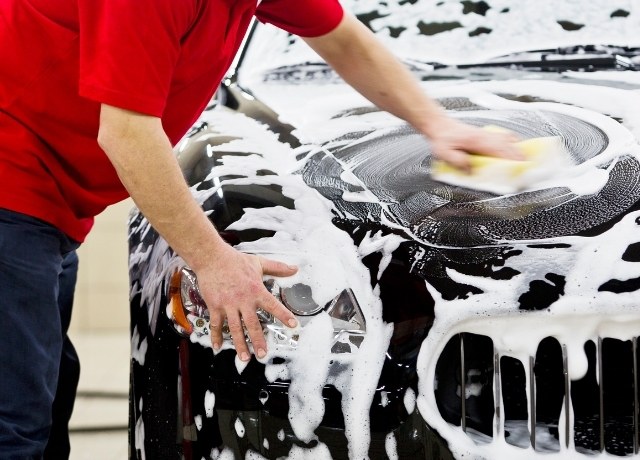




























































4 thoughts on “How to Wash a Car Without a Hose? 4 Superb Methods – Flawless Car Guide”